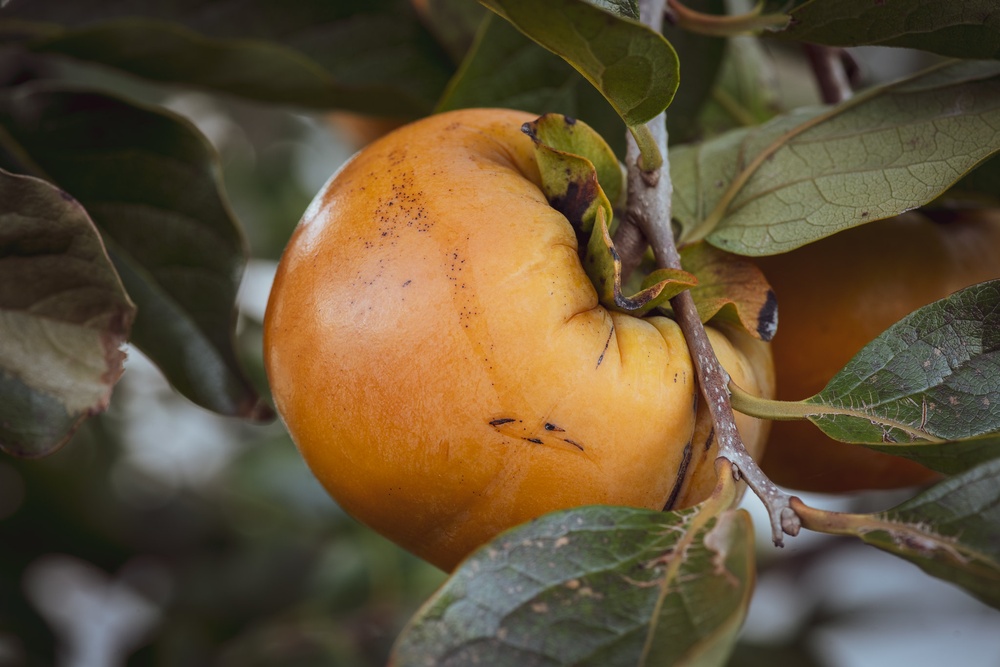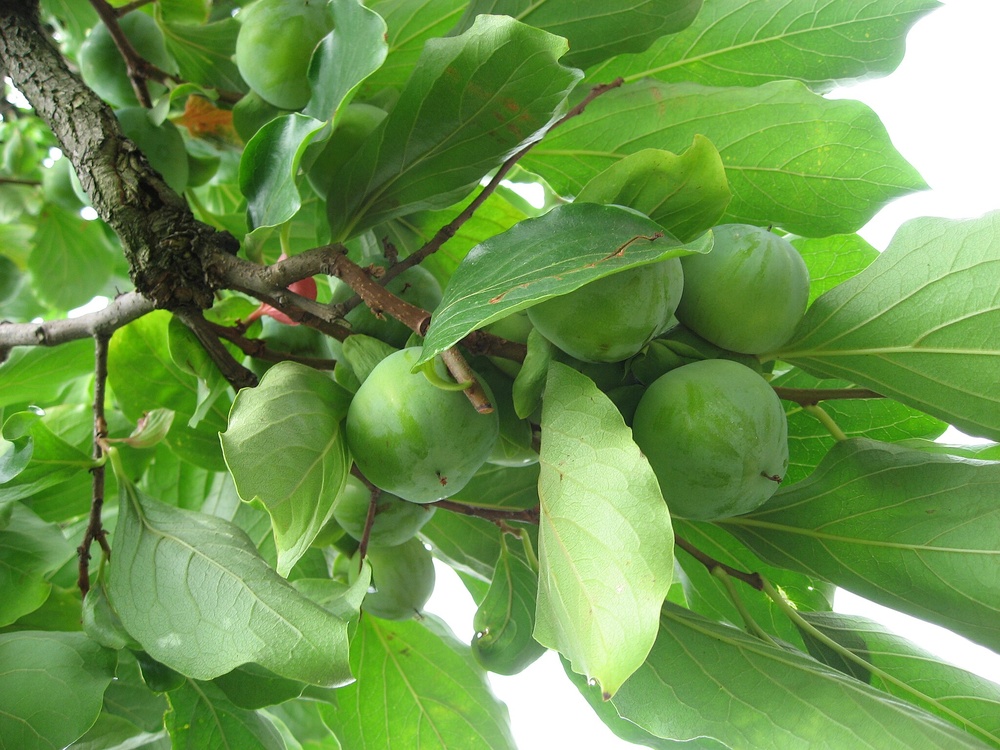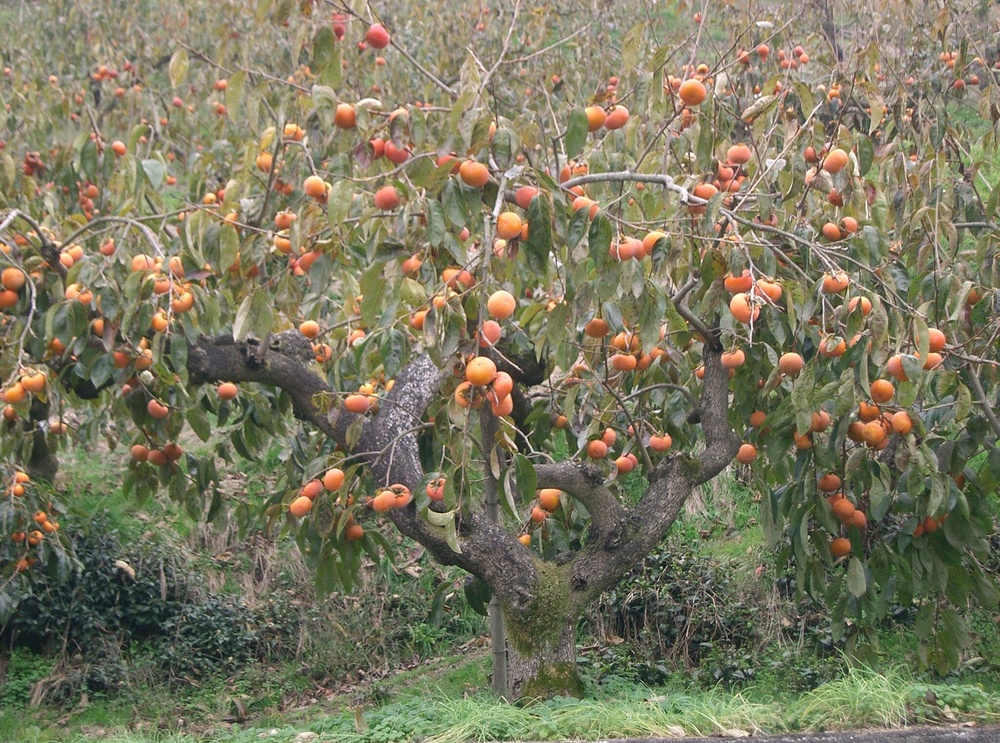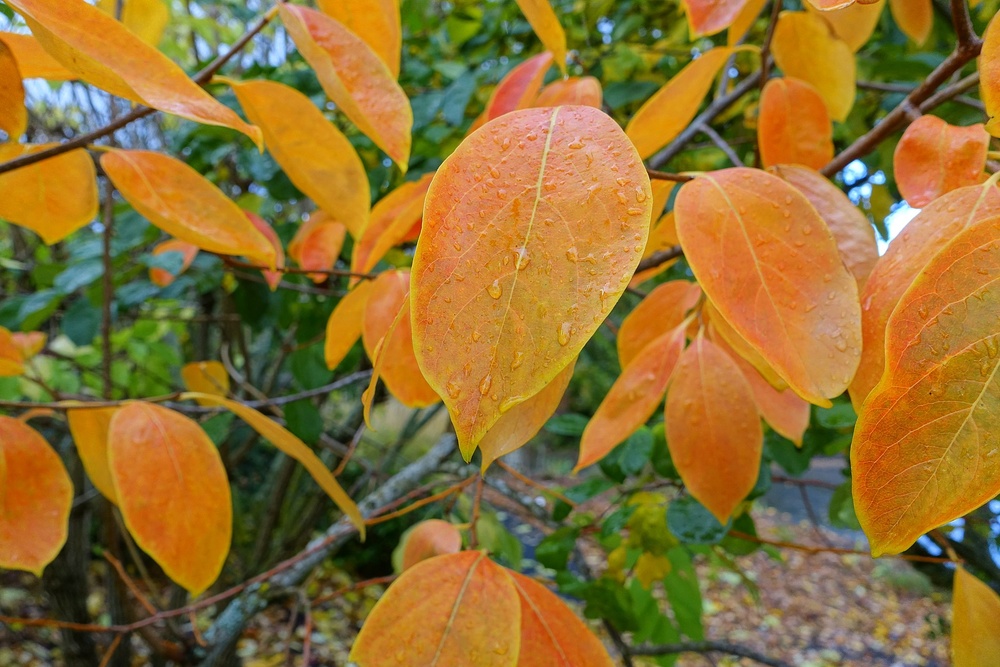Diospyros kaki
Kaki / Kaki
Ebenaceae
Edible plant part (2)
Bark,
fruits
Read 'form of consumption' for safe preparation methods
Toxic plant part (1)
None
Kaki belongs to the small trees-large shrubs in the food forest. In the process of ecological succession it is a mid species. The growth rate is medium. Fully grown the plant has an average height of 4 to 8 meter. and a width of 4 to 8 meter.
The foliage (or leaf cover) is dense. The Kaki is decidious. It buds in april and it loses its leaves in november.
This species forms a heart-shaped medium deep root system. This species is non spreading in the food forest. Kaki is no nitrogen fixer.
 foto: Puddin Tain, https://www.flickr.com/photos/puddintain850/43839745860
foto: Puddin Tain, https://www.flickr.com/photos/puddintain850/43839745860
 foto: Puddin Tain, https://www.flickr.com/photos/puddintain850/43839745860
foto: Puddin Tain, https://www.flickr.com/photos/puddintain850/43839745860
 foto: Liné1, https://commons.wikimedia.org/wiki/File:Diospyros_kaki_fruit_04_by_Line1.JPG
foto: Liné1, https://commons.wikimedia.org/wiki/File:Diospyros_kaki_fruit_04_by_Line1.JPG
 foto: KENPEI, https://commons.wikimedia.org/wiki/File:Diospyros_kaki1.jpg
foto: KENPEI, https://commons.wikimedia.org/wiki/File:Diospyros_kaki1.jpg
 foto: Daderot, https://commons.wikimedia.org/wiki/File:Diospyros_virginiana_%C3%97_kaki_%27Nikita%27s_Gift%27_-_Oregon_Garden_-_Silverton,_Oregon_-_DSC00168.jpg
foto: Daderot, https://commons.wikimedia.org/wiki/File:Diospyros_virginiana_%C3%97_kaki_%27Nikita%27s_Gift%27_-_Oregon_Garden_-_Silverton,_Oregon_-_DSC00168.jpg
Growth factors
- Frost (whole plant)
-
very strong frostcold frostmild frostlight frostno frost
- Frost (flowers)
-
very strong frostcold frostmild frostlight frostno frost
- Light
-
full sunlight shadehalf shadefairly deep shadedeep shade
- Wind
-
strong sea windstrong windsome windshelteredvery sheltered
- Soil texture
-
sandloamlight clayheavy claypeat
- Soil moisture
-
inundationwetmoistdrydrought
- Groundwater level
-
very lowlowmediumhighvery high
- Soil acidity
-
very acidacidneutralalkalinevery alkaline
- Soil fertility
-
very richrichaveragepoorvery poor
Flowering and pollination
- Flowering period (peak)
- end of june
- Flowering period (length)
- several weeks
- Pollination vector
- insects, not applicable
- Plant reproductive fertility
- not applicable, self sterile
Life Span and Plant Health
Disease susceptibility
very resistantHarvest and Consumption
Bark
Fruits
- Edible plant parts
- Bark
- Harvest location edible part
- Above reach, high, but within reach
- Harvesting period - start
- End of october
- Harvesting period - length
- Month
- Harvesting period - uniformity
- High, low, medium, varies per cultivar
- Suitable harvesting methods
- Hand
- Size edible parts
- Large
- Post harvest ripening
- Yes
- Form of consumption
- Fresh, processed, varies per cultivar
- Natural storability
- Several months
- Suitable markets
- Niche
- Productive life span - start (year) - minimum
- 3
- Productive life span - start (year) - minimum
- 3
- Productive life span - peak (year) - minimum
- 8









































